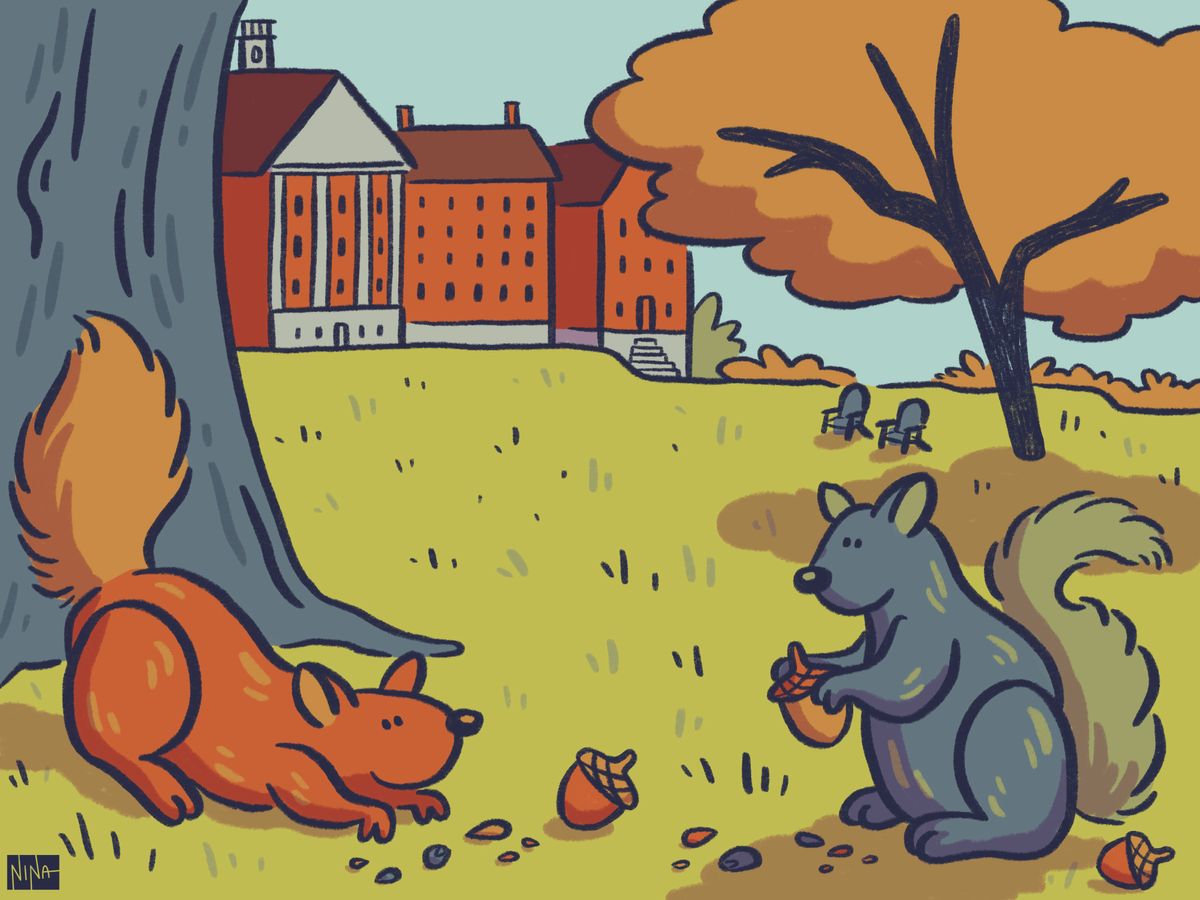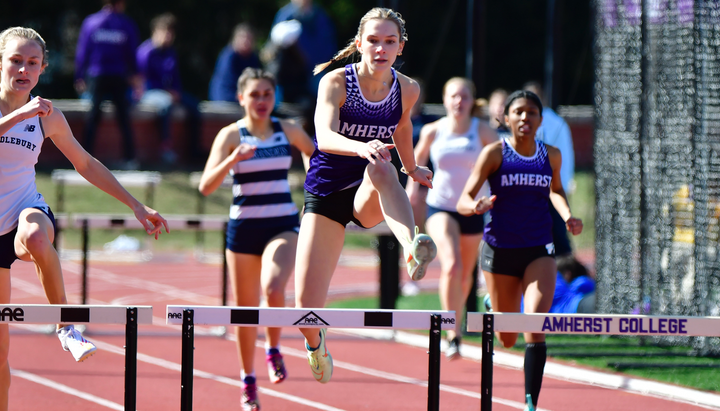A Squirrely Alliance for Campus Sustainability
Staff Writer Pho Vu ’23 highlights the potential sustainability benefits of a symbiotic relationship with the squirrels on campus.

In the College’s tireless pursuit of sustainability, unexpected figures emerge as a valuable contributor: the Eastern Gray squirrels. They form the largest portion of the campus rodent population, often grabbing our attention with their mindless, amiable gestures.
Yet these creatures are more than just charming distractions. Despite getting a bad rap as rodents, squirrels play a vital role in promoting sustainability on campus, specifically by supporting seedling growth, lowering food waste, and providing a renewable source of energy for the community. Exploring the integration of squirrels into our sustainability movement opens up unique educational opportunities for students and offers a more well-rounded picture into our sustainability practices — an outcome that presents an opportunity for humans to coexist with the natural world.
In response to the call for more sustainable solutions to address campus ecological issues, I have some squirrel-related proposals to make, each tailored to a specific department on campus.
Seed Distribution
One of the squirrels’ remarkable characteristics lies in their voracious appetite for seeds. As they traverse the campus, squirrels inadvertently spread these seeds, enabling the growth of diverse plant species. This unintentional yet essential role of seed dispersal contributes to the establishment of vibrant ecosystems, fostering biodiversity and enhancing the overall sustainability of our campus. To further harness this natural behavior, we can start out by installing mini feeders with regular refills in the desired areas. This will ideally reinforce squirrels’ tendency to visit these stations, and due to their forgetfulness (not remembering where they bury the nuts), they will naturally aid in seed dispersal. The initiative can be overseen by Book and Plow Farm, as they might have a good knowledge of where seeds should be planted.
Food Waste Reduction
Despite the common knowledge that squirrels are loyal to nuts, a website called What Do Squirrels Eat reveals that squirrels are not picky eaters. Although it is true that they have a special liking for nuts, fruits, and other other plant-based things, they will not shy away from dog and cat food, or even humans’ favorite bag of chips and cereals.
At the same time, Valentine Dining Hall has garnered praise for its well-organized Food Alliance Program, where excess food is packed and sent to local orphanages. However, the lingering issue of food waste remains. Enter the Amherst Eastern Gray squirrels, poised to take on this challenge. With their openness to food options, the squirrels can serve as a solution to the challenge of food waste, working in harmony with the preexisting program. Similar to the well-established food packaging initiatives, we can create a training program that habituates squirrels to these food waste collection stations at designated times of the day.
By establishing a symbiotic relationship between the squirrels and the Valentine Dining Hall, we can repurpose surplus food effectively.
A Call for More Research Involving Squirrels
At one point, a squirrel in purple was once considered a potential mascot for Amherst College. Intrigued by this notion, I delved into possible historic connections between these squirrels and the college, but found little beyond a now-dormant student-run Instagram account posting squirrels’ moments on campus and Amherst’s warning of rodent damage. I was not disappointed for long, when I finally came across an article from Nora Lowe ’26 discussing gray squirrels’ intelligence in adapting to environments.
The presence of squirrels, particularly Eastern gray ones, on campus should not be seen as a nuisance but rather an opportunity for scholarly investigations. College must actively create opportunities that encourage students to participate in research projects focusing on the behavioral patterns and ecological impacts of squirrels. Engaging in such endeavors not only pushes for our academic community’s profound understanding of wildlife but also fosters a deeper sense of responsibility towards the environment. Wouldn’t it be interesting to read research papers about whether a sudden drop in human presence on campus during the Covid hiatus affects their behavioral patterns?
Collaborating for a Greener Future
It is true that implementing these suggestions demands substantial time and effort, such as meticulous planning and monitoring. But with small steps taken at the moment, we can develop a group of more structured programs that capitalize on the presence of these tiny residents on campus. By recognizing the squirrels’ capacity to aid in seed dispersal and address food waste as well as their potential as a new energy source, we can forge a unique partnership that benefits both the campus environment and the community as a whole. As we strive for a greener future, let us collaborate with these furry allies in order to create a sustainable and thriving campus ecosystem.




Comments ()